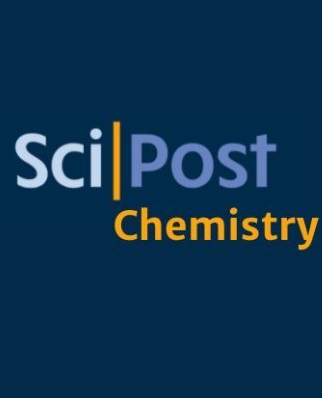移动杂质算子动力学中的马尔可夫相变到非马尔可夫相变
IF 5.4
2区 物理与天体物理
Q1 PHYSICS, MULTIDISCIPLINARY
引用次数: 0
摘要
我们研究的是杂质在混沌介质中运动的随机单元电路模型。介质和杂质之间的信息交换是通过改变杂质的速度 $v_d$ 和介质中的信息传播速度 $v_B$ 来控制的。在超音速($v_d> v_B$)以上,信息在进入介质后无法流回杂质,由此产生的动力学是马尔可夫式的。在超音速以下,即 $v_d<v_B$,杂质和介质的动力学是非马尔可夫式的,信息能够回流到杂质上。我们的研究表明,这两种状态被一个连续的相变分隔开来,相变指数与算子在介质中的扩散直接相关。我们通过在中间时间替换杂质的情况下监测时序外相关器(OTOC)来证明这一点。在马尔可夫阶段,介质中的信息无法转移到被替代的杂质上,表现为算子没有明显的发展。相反,在非马尔可夫阶段,我们观察到算子在新引入的杂质上获得了支持。我们还利用相干信息描述了动态特性,并提供了两种解码器,可以有效探测马尔可夫信息流和非马尔可夫信息流之间的过渡。我们的研究表明,马尔可夫动态和非马尔可夫动态可以通过相变分离,我们还提出了一种观测这种相变的高效协议。本文章由计算机程序翻译,如有差异,请以英文原文为准。
Markovian to non-Markovian phase transition in the operator dynamics of a mobile impurity
We study a random unitary circuit model of an impurity moving through a chaotic medium. The exchange of information between the medium and impurity is controlled by varying the velocity of the impurity, $v_d$, relative to the speed of information propagation within the medium, $v_B$. Above supersonic velocities, $v_d> v_B$, information cannot flow back to the impurity after it has moved into the medium, and the resulting dynamics are Markovian. Below supersonic velocities, $v_d< v_B$, the dynamics of the impurity and medium are non-Markovian, and information is able to flow back onto the impurity. We show the two regimes are separated by a continuous phase transition with exponents directly related to the diffusive spreading of operators in the medium. This is demonstrated by monitoring an out-of-time-order correlator (OTOC) in a scenario where the impurity is substituted at an intermediate time. During the Markovian phase, information from the medium cannot transfer onto the replaced impurity, manifesting in no significant operator development. Conversely, in the non-Markovian phase, we observe that operators acquire support on the newly introduced impurity. We also characterize the dynamics using the coherent information and provide two decoders which can efficiently probe the transition between Markovian and non-Markovian information flow. Our work demonstrates that Markovian and non-Markovian dynamics can be separated by a phase transition, and we propose an efficient protocol for observing this transition.
求助全文
通过发布文献求助,成功后即可免费获取论文全文。
去求助
来源期刊

SciPost Physics
Physics and Astronomy-Physics and Astronomy (all)
CiteScore
8.20
自引率
12.70%
发文量
315
审稿时长
10 weeks
期刊介绍:
SciPost Physics publishes breakthrough research articles in the whole field of Physics, covering Experimental, Theoretical and Computational approaches. Specialties covered by this Journal: - Atomic, Molecular and Optical Physics - Experiment - Atomic, Molecular and Optical Physics - Theory - Biophysics - Condensed Matter Physics - Experiment - Condensed Matter Physics - Theory - Condensed Matter Physics - Computational - Fluid Dynamics - Gravitation, Cosmology and Astroparticle Physics - High-Energy Physics - Experiment - High-Energy Physics - Theory - High-Energy Physics - Phenomenology - Mathematical Physics - Nuclear Physics - Experiment - Nuclear Physics - Theory - Quantum Physics - Statistical and Soft Matter Physics.
 求助内容:
求助内容: 应助结果提醒方式:
应助结果提醒方式:


